Fortune Vineyards
Château Lafite Rothschild
Carruades de Lafite Pauillac Red Bordeaux Blend 2003
On the nose, ripe; blackberries, sweet & sour dark cherries, cooked cherries & strawberries & hues of blueberries. Black tea, cola, soft baking spices; vanilla, light clove & cinnamon. Crushed rocks, stones, limestone, turned, moist black earth, tobacco leaf, saddle-wood, soft leather, dry & fresh dark red florals.
The body is medium edging toward full. The tannins pretty well resolved. The ripe fruits show the hot, ripe vintage. Blackberries, sweet & sour dark cherries, cooked cherries & strawberries & hues of blueberries black tea, cola, soft baking spices; vanilla, light clove & cinnamon. Crushed rocks, stones, limestone, tobacco with ash, some graphite, soft medium dark spice, turned, forest floor, powdery but edgy minerals, saddle-wood, soft leather, dry & fresh dark red florals with some violets on the finish.
This showed better with Ribeye. The Ribeye brought out a fuller, richer wine with even more complexity. 9.35-9.4 with the Ribeye. It just missed 9.2 on its own. It’s big brother the 03 “Lafite” is 💯 point Parker wine.
Photos of; Chateau Lafite, their oak vat fermenters, Estate wine and their magnificent barrel room.
Interesting history and producers notes...Lafite Rothschild has a long and interesting history dating back to 1234, even though the property was not in the Bordeaux wine business at that time.
It is has been largely believed that vines were already planted on their terroir. The owner of the estate at the time, Gombaud de Lafite left his mark, his name. Almost 1,000 years after he owned it, the Chateau is still named after him! The vines were probably in existence at Lafite for over a century, it was not until around 1680, the majority of vineyards of what we know of as Lafite Rothschild today were created. This is because on the 1680 estate manifest, there are six mentions of their Bordeaux vineyards. Jacques de Segur, earns credit for cultivating the vineyard as I wrote in my Colon Segur post last weekend. In 1695, Alexandre de Segur married Marie-Therese de Clauzel, heiress to Chateau Latour. So to dovetail that write up, within a generation, the Segur family married into two of the greatest Bordeaux vineyards, Chateau Lafite and Chateau Latour! When their son, Nicolas-Alexandre passed away, Chateau Lafite and Chateau Latour were separated.
In 1797, Chateau Lafite was sold again. In the deed of sale, Chateau Lafite was described as a Premier Cru of Medoc. This is one of the earliest mentions of what we know of today as Lafite Rothschild producing wines of what would later be classified as an 1855 First Growth.
At that time, of Lafite were managed by the Goudal family. The Goudal family were wine historians and were able to read accurate records and details of the viticulture and marketing plans for Chateau Lafite in the estates formative years. The Goudal family gets the credit for creating the cellar and saving many of the oldest bottles that remain in the cold, dark cellars, including their oldest bottle, the 1797 Lafite!
The start of the famous Rothschild family begins in 1744, with the birth of Amschel Meyer. Amschel Meyer began creating his fortune while working as a merchant at “Zum Roten Schild,” which eventually became the family name of Rothschild.
In 1798 his sons were sent to various cities to create their fortunes. Needless to say, his sons all prospered as did their children in turn. This eventually led to them wanting to own a Chateau in Bordeaux. So in 1853, Baron Nathaniel de Rothschild, an English member of the Rothschild family, purchased Chateau Brane-Mouton. As was the custom of the day, the new owner renamed it using his name and Chateau Mouton Rothschild was born.
This was followed in 1868, when James Rothschild, another member of the family purchased Chateau Lafite, which was now a coveted First Growth.
On 8 August, 1868, Baron James d’Rothschild purchased Chateau Lafite, which was sold at a public auction in Paris. It’s assumed, he bought the property for family competitive reasons looking to one up his brother, the owner of Mouton Rothschild. At that time, Mouton Rothschild was only a Second Growth at the time. But, that does not paint the entire picture. The 1855 Classification had not taken on the importance associated with it the we see it today. Plus, buying Lafite was a reasonable investment as the vineyard sold for about 8 times its earning potential.
The actual Chateau is one of the older structures in Bordeaux, as part of the building dates back to the later part of the 16th century. In 1868, the vineyard took up 135 hectares, of which 74 hectares were cultivated with vines. Production was much smaller in those days than it is today as it was between 4,000 and 5,000 cases.
Just three months after the purchase, Baron James d’Rothschild passed away and Chateau Lafite Rothschild became the joint property of his three sons; Alphonse Rothschild, Gustave Rothschild & Edmond Rothschild. Since 1868, Chateau Lafite Rothschild has remained in the hands of the of Rothschild family. The new owners renamed the estate Chateau Lafite Rothschild.
Jumping ahead to the modern age, in 1962, the Rothschild family added to their holdings when they purchased Chateau Duhart-Milon, a Fourth Growth vineyard also located in Pauillac. It was owned by the Casteja family for more than a century, Chateau Duhart Milon suffered from neglect and was in a awful condition. By the time Duhart Milon was obtained by the Rothschild family, the vineyard was down to only 17 hectare which required extensive renovations.
Baron Eric Rothschild, nephew of Baron Elie Rothschild, took over the management of Lafite Rothschild in 1974. Baron Eric Rothschild was part of the fifth Rothschild generation to inherit Chateau Lafite Rothschild. In 1984, the Rothschild family added to their holdings in Bordeaux with the purchase of Chateau Rieussec in Sauternes.
1987 was a difficult vintage, but because that was the year Lafite celebrated the inauguration of their wine new cellar, they had a lot to be excited about.
The new cellars were built under the supervision of Catalan architect Ricartdo Bofill, is both underground and circular, with a vault supported by 16 columns, giving the structure a majestic architectural style. The cellar holds 2,200 barrels, which is about 55,000 cases of wine. The construction took two years to finish and was completed in 1988.
Domaines Baron Rothschild became one of the first Bordeaux properties to invest in South America when they purchased Vina Los Vascos from a Chilean family. The owners of Lafite Rothschild continued expanding their holdings with the purchase of Chateau lEvangile in Pomerol from the Ducasse family, who owned the property for almost 100 years.
The wine making at Chateau Lafite Rothschild was managed by Charles Chevallier, who began his position in 1994. Charles Chevallier was replaced by Eric Kohler in January 2016. 2017 saw another change at the estate when Jean Guillaume Prats replaced Christopher Salin as the President of Domaines Baron Rothschild.
Perhaps, it’s the most refined of the First Growth. The wine, like all First Growth’s takes decades to mature. It has remarkable staying powers. Bottles of 1870 Lafite Rothschild discovered in the Glamis castle remain profound at more than 140 years of age! It is consider by many Master Sommeliers to be the best wine in the world.
Chateau Lafite Rothschild is one of the earliest major Bordeaux estates to bottle their own wine. In 1890, they bottled a large portion of the wine and again in 1906. Part of the estate bottling was due to requests from Negociants who were willing to pay more for Chateau bottled wines. Also, bottling was primarily done to combat piracy. At the time, it was known that merchants in some countries, like Russia were bottling cheap wine and placing labels from Lafite Rothschild on the bottles. The Koch’s famous Jefferson bottles were not the first attempt at counterfeiting.
Prior to 1996, some would say the property had its share of ups and downs. The 1960’s and 1970’s were not great for Chateau Lafite Rothschild. But since 1996, Lafite Rothschild has been producing some of the best wine in their history!
Sadly, only the wealthy can afford to purchase it. Price aside, there is no denying the level of quality. In 2003 Lafite Rothschild produced a wine that is possibly unequaled by the estate at any time in their long history. Hence, my purchase of their 03 second wine. 2009, 2010 and 2016 are not far behind.
Starting in about 2008, Lafite Rothschild became the most collectible wine from Bordeaux. Prices exploded due to demand from China as Chinese businessmen bought them as gifts or bribes depending on you look at it.
The reason this started was Lafite Rothschild paid for product placement on the number one rated Chinese soap opera on television. Characters in that show were pictured enjoying life with Lafite Rothschild and since then demand went through the roof as did priced.
However, Issac Newton had it right when he declared “What goes up, must come down.” Prices for Lafite Rothschild plummeted after 2011. By the difficult 2013, prices were finally starting to hold firm, but many of the vintages that were setting price records on a daily basis had lost close to 50% of their value.
Starting with the 2012 vintage, Chateau Lafite Rothschild began instituting anti-counterfeiting measures. From 2012 forward, to help fight, rampant counterfeiting, the estate places a seal of authenticity on the capsules of both Lafite Rothschild and Carruades de Lafite. The seal features a unique, numbered code that can be checked on their website, to verify if the wine is real.
The 112 hectare vineyard of Chateau Lafite Rothschild is planted to 70% Cabernet Sauvignon, 25% Merlot, 3% Cabernet Franc and 2% Petit Verdot. This shows a slight change in the vineyard.
While Cabernet Sauvignon remained at 70%, today there is slightly more Merlot, less Cabernet Franc and the Petit Verdot has been added since the mid 1990’s.
Located in the far north of the Pauillac appellation, only the small, Jalle de Breuil stream separates the vineyards from St. Estephe. You could divide the vineyards of Chateau Lafite Rothschild into three sections with 100 separate parcels in all. The estate has close to 50 hectares of vines located close to the Chateau, on both sides of the D2, which offers gentle rises in elevations of up to 27 meters. They also have about 50 hectares vines planted on the plateau in the Carruades sector, where they have two blocks of vines, one of which is inside the vineyard of Chateau Mouton Rothschild. It is interesting to note that even though the parcels in the Carruades sector give their name to the second wine of the estate, those vines are almost always placed in the Grand Vin.
There are also vines adjacent to, and interspersed with the vineyards of Chateau Duhart Milon. The property also consists of a smaller, 4.5 hectare parcel of vines located in the Saint Estephe appellation, “La Caillava”. The vines in St. Estephe are situated not that far from Cos d Estournel, which are located on a larger a parcel known as Blanquet. The vines in Saint Estephe are allowed to be placed into the wine of Chateau Lafite Rothschild because those vines were used to produce Lafite in 1885, at the time of the classification. The vineyards are close to their famous neighbor Mouton Rothschild.
Located just south of the Chateau, the best terroir of Lafite Rothschild has a thick layer of gravel with sand, clay, marl and limestone in the soils with rolling, gravel slopes. The gravel can be as deep as 4 meters in some parcels.
It is important to note that even though their vineyards are in the far north of Pauillac, most of the soil is pure gravel, rocks and stones. With more than 50% of the soil consisting of gravel, that is a large part of the reason Lafite Rothschild has such elegant, feminine textures and that coveted sensation of minerality.
On average, the vines are close to 40 years of age. However, Chateau Lafite Rothschild has much older vines. In fact, they have some vines that are more than 100 years of age planted in the La Graviere section. That small parcel of Merlot vines dates back to 1886. Less than 1% of the vines are that old.
Additionally, they have a small section of Cabernet Sauvignon that dates back to 1922! Other old vines range from 50 to 90 years of age! They also maintain some of the oldest Petit Verdot vines in the Medoc that was planted in the early 1930’s.
At Chateau Lafite Rothschild, between 1% to 1.5% of the vineyard is replanted every year. Vines less than 20 years of age are never included in the Grand Vin.
The vineyard of Chateau Lafite Rothschild is planted to a vine density that ranges from 7,500 to 8,500 vines per hectare. Only organic fertilizers are used in the vineyards of Lafite Rothschild.
During harvest, the goal is not to pick at the maximum level of ripeness. Instead, they are seeking a blend of grapes at differing levels of maturity, which gives the wine its unique textures, freshness, aromatic complexities and elegant sensations.
Lafite Rothschild is the largest of the First Growth vineyards with close to 112 hectares of vines. A large portion of the estate is taken up with stunningly, beautiful landscaping, lakes, trees and parkland.
At one point in time, Chateau Lafite Rothschild produced a dry white, Bordeaux wine that was sold as Vin de Chateau Lafite. The wine was produced from a large percentage of Semillon, blended with a small amount of Sauvignon Blanc. The last vintage for their white wine was 1960. The wine was sold as a generic AOC Bordeaux blanc with a simple, scripted label, black and white label.
Lafite vinification takes place in 66 vats that are a combination of 29 wood vats, 20 stainless steel tanks and 17 concrete vats that range in size from as small as 45 hectoliters up to 123 hectoliters in the concrete and as large as 270 hectoliters for the wood. The wide range of vat sizes coupled with different materials allow Chateau Lafite Rothschild to vinify depending on the needs of each specific parcel and grape variety. The stainless steel tanks and oak vats are used for Cabernet Sauvignon. The Merlot is vinified in the concrete tanks. Malolactic fermentation occurs in smaller, stainless steel tanks that vary in size from 25 hectoliters up to 60 hectoliters. At this point, Chateau Lafite Rothschild does not yet use gravity to move the fruit and juice in the cellar. It’s a good bet that a remodel is coming soon.
The average annual production of Chateau Lafite Rothschild ranges from 15,000 to 20,000 cases of wine per year, depending on the vintage. They of course make this second wine, Carruades de Lafite, which due to the name and association with the Grand Cru, has also become extremely collectible. Carruades de Lafite takes its name from a specific section of their vineyard that is located near Mouton Rothschild. Carruades is actually one of the older second wines in Bordeaux, as it was first produced in the mid 1850’s. About 100 years later during the mid 1960s, the estate reintroduced their second wine naming it Moulin de Carruades. The name was changed again in the 1980’s to Carruades de Lafite.
There is also a third wine which is sold as an AOC Pauillac that is produced from declassified fruit from Lafite Rothschild and Duhart-Milon.
The blend for Chateau Lafite Rothschild changes with each vintage depending on the character and quality of the vintage. Generally speaking, the amount of Cabernet Sauvignon in the blend ranges from 80% to 95%. Merlot is usually 5% to 20%. Cabernet Franc and Petit Verdot usually varies from 0 to 5%.
— 8 years ago
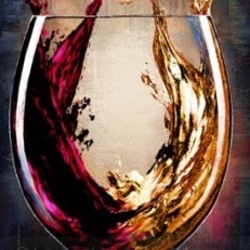
Hirsch Vineyards
The Bohan-Dillon Sonoma Coast Pinot Noir
Lovely Pinot, plus it has a wonderful story, + hand-drawn label by a passionate wine maker that we had the fortune to meet on a trip years ago. There is white pepper and super-subtle fruit: cheers! — 11 years ago
Domaine du Séminaire
Côtes du Rhône Red Rhone Blend
The cherry punches you in the face, in a very good way. Also, this is definitely a wine that you want to have open for at least 30 to 45 minutes because it starts out being exceptionally closed. I had the fortune of tasting it after it had been open for a few hours before picking up a couple of bottles and could really determine the difference once I opened the ones I had purchased. Also, there's A significant earthiness to complement the fruit, mainly cherry, as well as a reasonable amount of tannin. Others that I was with thought that the tannins were a bit on the high side — 11 years ago
Fortune
Niagara River Cabernet Rose 2012
Dry Rose... Very delicious. You can taste the blackberry. — 12 years ago
Giacomo Fenocchio
Villero Barolo Nebbiolo 2009
Had the 2009 Cannubi at an intimate tasting including a 1982 Ducru Beaucaillou!! Which was nearly perfect by the way. This Barolo while 9 years old was still ruby colored with structure and fresh tart berries. Also elegant and enchanting. Delicate earth, leather, herbs and olive tones. Perfect balance, and likely has at least another 9 years ahead of it. I’ve had the good fortune to have 2 sublime Nebbiolos within a week of each other. Aldo had 3 great highly touted Napa Cabs, but this Barolo eclipsed them with its subtlety and finesse — 7 years ago
JAQK Cellars
Soldiers of Fortune Carneros Pinot Noir 2014
Amazing aroma. Berry jam and some nice wet soil. Something a bit herbaceous too. Taste is good too. Smoky and fruity. A rich, ripe full CA Pinot. Bitter licorice. Hints of dark chocolate as well. Holds its own even after being open for a week. A great buy for $10 at grocery outlet. — 8 years ago
Hennessy
Very Special VS Cognac 2017
This may sound silly, but I bought this bottle after watching a Martha Stewart cooking show on preparing Coq Au Vin. Yeah, I admit it, Im A Martha Stewart fan . She said" I always use my finest cognac."
Yes I paid a small fortune to cook chicken with cognac, but I followed the recipe.
I'm not a big cognac guy, but ...........................
Very smooth, my guests love this stuff, and the dinner was a hit too.
40% alc/vol. Product of France. — 8 years ago

Domaine de la Janasse
Vieilles Vignes Châteauneuf-du-Pape Red Rhone Blend 2004
I have a few bottles of this from ‘12 vintage. I was fortune enough that Elie Wine Company had a case of 2004 laying around. Since I am not a big consumer of these wines I thought it would be fun to try an older vintage and see what may be in store in the future. I tasted with @Todd Abrams. Old leather and cherry and starting to get some old cigar box/smoke. Old red brick in color. Threw it in the decanter for dinner so I am sure it may get more expressive as the day wears on. — 8 years ago
Ruby Trust Cellars
Fortune Seeker Red Blend 2012
Love this wine! I think it got better with age too. Great velvet mouth feel, jamminess, balanced tannins, blueberry and blackberry flavors. — 8 years ago
Château Gigault
Premières Côtes de Blaye 2011
So Im inebriated right now, drinking alone as usual. Just made a fortune in Bitcoin..so fsck it, French wine in Bangkok right? Earth, mushroom, black fruit, choc, vanilla, and a hint of vagina. Med tannin, med acid, served at 60F. La Cosa Nostra resto in Bangers, solo. Excellent Cab Sav. I fucking love France right now. — 8 years ago
Reichsgraf von Kesselstatt
Josephshöfer Auslese Riesling 1997
1997 vintage. Rich aromas of pineapple, buttercup, honey, praline/candied almonds. Well balanced and vibrant acidity. Rich and fruity with minerals and hint of smoke. Medium long finish. Very pleasant wine which still holds the typical Riesling freshness after 16 years. A good buy for anyone who wants to try an aged Riesling without spending a fortune. — 8 years ago
Fontanafredda
Briccotondo Langhe Dolcetto 2014
Ok. I'm trying to refrain from hyperbole, but this (being the first Dolcetto I have tasted) was legitimately blown away by this bottle of juice!
For only $10.99 from TJs in NYC USQ, this is easily one of the best values I've had the fortune of encountering to date.
Intense notes of Black Cherry on on both nose and palate with a captivating spiciness / earthiness that helps add too the tremendous balance presented by the wine.
I've said it once, but this time I would like to reiterate:
BUY. DRINK. REPEAT. REPEAT. REPEAT. — 9 years ago
Long Vineyards
Napa Valley Estate Cabernet Sauvignon 1980
14% alc.
Showing amazingly "young" at 37 years.
I've had the good fortune of tasting quite a few vintages from this winery and (still having a slight preference for their 1979) all the wines from Zelma Long are simply fantastic and deserves serious attention if aged CA is your thing.
— 9 years ago
Frederic Esmonin
Lavaux St. Jacques Gevrey-Chambertin 1er Cru Pinot Noir 2013
Ah, the approachability and pleasure of youth. Deelish red-black fruit combo satisfies. Spicy bordering on tangy flavor creates interest. Good rich mouthfeel. And importantly not a fortune at retail — 9 years ago
Dierberg
Santa Maria Valley Chardonnay 2011
Only love makes us see ordinary things in extraordinary ways. At least that is what the Valentine's Day fortune cookie says at RDG in Houston. I see an "ordinary" Burgundian style wine. — 10 years ago
Gramona
Gran Cuvée Cava Macabeo Xarel-lo Chardonnay 2009
Cava tastes a lot more like champagne than Prosecco, so if you don’t want to pay a fortune for your NYE wine, this might be your preference. Where Champagne is bread-dough yeasty, this is as well, but it is BOLD in its yeastiness. There are in yo face aromatics because this is edgy and harder than the other options here, which makes the smells bounce out of the glass. Want a big start to your new year? This is what I would toast with. Repeat after me: THIS YEAR WILL BE MY YEAR! — 11 years ago
JAQK Cellars
Soldiers of Fortune Napa Valley Syrah 2008
A fabulous wine enjoyed with friends. — 11 years ago
Domaine Chanzy
Clos de La Fortune Monopole Bouzeron Aligoté 2012
Mineral, lively. — 12 years ago
Ridge Vineyards
Estate Monte Bello Vineyard Cabernet Sauvignon Blend 2008
Arrived at Sorensen's in the Sierras in time for dinner. Great fortune to find this on the list. Perfect with ribeye and roasted potatoes. — 13 years ago
JAQK Cellars
Soldiers of Fortune Monterey County Pinot Noir
One of my favs from the 50 & Fabulous gifted selections. — 7 years ago
San Giusto a Rentennano
Percarlo Toscana Sangiovese 2007
What a beautifully sculpted, profound Percarlo. The wine has incredible purity of fruit and a wonderful perfume of cherries, essence of cherry liqueur. I've had the fortune of enjoying my fair share of outstanding bottles of this wine from different vintages, including a magnum of the 1997 with my brother at San Pietro di Positano and a bottle of the 1999 with my parents at All'olivo in Lucca. This wine brings up the best of Tuscany and it's usually a thrill to drink. — 8 years ago
Chateau Montelena
Napa Valley Cabernet Sauvignon 1988
Today was my first time to host Wednesday Wine Committee. I’ve had the good fortune of attending on and off over the last two years and was delighted to finally host a lunch. As many of the wines I brought today I’ve posted on here before, I’m posting the white wine of the day and the red wine of the day. As always, the format of 1 sparkler, 3 whites, 4 reds and 1 dessert wine was in play and everything was tasted blind.
As my 30th birthday approaches next week, I wanted to bring a bottle of something special, so I decided on a birth year wine as a small early birthday celebration. Absolutely shocked at the color...was as dark as an ‘07 Farella that was next to it! Acidity, fruit and finish were all insane for the age. Barnyard funk blew off easily and revealed bing cherry, dates, currant and a killer herbal acidic finish. Tannins are still providing nice structure here. ‘88 wasn’t a great Napa vintage, but this just goes to show you how quality producers churn out age worthy wines regardless of vintage. A real treat. Credit to @Mark Flesher for helping me get this! — 8 years ago


Flora Springs
Trilogy Napa Valley Cabernet Sauvignon Blend 1993
They should have called the Winery Floral Springs based on the nose. Beautiful; blackberry, black raspberries, dark cherries, strawberries, dry cranberries and plum floral fruits. Nice spice, vanilla, touch of clove & cinnamon, used leather, dark rich soil, crushed volcanic minerals, black fruit tea, black raspberry cola and dark fresh florals with violets. The tannins are 95% resolved. The body is lush & ripe. The length, tension & structure are nearing the end. Just a few years left of being worthwhile. However, the balance is stereo tuned. The fruit on the palate shows even more elegant & ripe floral fruits than the nose. Blackberry, black raspberries, dark cherries, strawberries, dry cranberries and plum floral fruits. Nice spice, vanilla, light clove & cinnamon, used leather, dark rich soil, crushed volcanic minerals, black fruit tea, black raspberry cola and dark fresh florals with violets for days. The acidity is like a waterfall. The beautiful, long, elegant finish is a little lean yet has a nice richness. Beautiful wine that just missed 9.2. Photos top to bottom and left to right. The Winery; which is separate from the other tasting room only on Hwy 29. The tasting room on Hwy 29 in St. Helena, Flora Spring caves and the front of their tasting room along Hwy 29. Producer notes and history...the stone winery on the grounds were built in 1885 by two immigrant brothers from Scotland, James and William Rennie. They were in construction, built the winery and planted 60 acres of grapes. The brothers had some bad fortune when phylloxera consumed the vines, and then a fire in 1900 destroyed their wine press and cooperage. In 1904, they sold the winery and fifteen years later Prohibition started. The winery was then closed until 1933. That year, Louis Martini, looked into their magic eight-ball and saw Prohibition collapsing and bought the Rennie property. They built a new stone house and also made a reserve wine from the hillside vineyards. However, the old winery remained empty until the Komes family bought the property, 325 acres, the old farm house, the newer stone house and 60 acres of vineyards. The son thought he’d persuade his dad to restore the old winery and proposed to call it Chateau Jerome. Although it had been designed by Hamden McIntyre an architect of several other classic 19th-century Napa wineries, by 1977, the place was a wreck. The tin roof of the building had so many holes in it. They called it the starlight roof. His father looked at it and stated, “I’ve worked all my life for my good name. I don’t want to squander it now.” John’s mother, Flora, however, sided with her son on the potential of the property. Carrie Komes suggested they could name the winery for her mother-in-law. Combined with the abundant springs on the land, they decided the name would be Flora Springs. It was a sure way to their mom’s heart and father’s wallet. Komes put his construction expertise to work on renovating the old winery, which still had scorch marks on the walls. So skeptical was his father about his son’s wine-making project, they divided the winery building. John rented half where he put his first fermenting tank, which he named R2D2. He invited a couple of friends from his wine-making class to help make wine at the new place. He also hired Mary Ann Graf, who in 1965 had been the first woman to graduate from the viticulture and enology department at UC Davis to help manage the project. She told John, “if you don’t hire a winemaker, I’ll quit.” He did and the 1979 Flora Springs chardonnay won a gold medal at the Los Angeles County Fair. In those days, it was fairs, not ratings. This was his first lesson in marketing as they sadly sold all the wine before they won the medal. Fairs were the big news instead of ratings as Parker had not yet risen to fame as he was the only one to call the grand 1982 Bordeaux vintage correctly. They submitted their 1981 Cabernet to eight fairs and won seven gold medals. From there, the winery just kept growing. They were the 67th winery in the county. Over the years, they had their ups and downs, but kept growing. One of their highlights was the creation this wine, Trilogy. It was one of the first Meritage blends in the valley. By 1984, they planted all the Bordeaux varietals; Malbec, Merlot, Cab Franc, Cabernet Sauvignon and Petit Verdot. They wanted to create a blend “by taste”, not by formula for a nice smooth wine that goes deep into the palate. They worked with a little of this and little of that. The first Trilogy was Cabernet Sauvignon, Merlot and Cab Franc. It was dubbed as velvet in the mouth. A lot of what they do is taming the tannins. One man who bought Trilogy by the case said, “it’s the only red wine his wife would drink young.” From the leftovers, they began making single-varietal estate wines. Another highlight was the discovery of a unique clone of Sauvignon Blanc in vineyards his father bought in Oakville. UC Davis could identify nothing like it in their vast library of clones. They were a bit ahead of the times, but this clone showed Flora Springs how different in that time period what Sauvignon Blanc could be like as it took all the grassiness out of Sauvignon Blanc. — 8 years ago



Peter Michael Winery
Belle Côte Chardonnay 2014
14.9% alc.
I found a mineral note in this that somehow made the wine seem lighter than other vintages I've enjoyed.
Having had the good fortune of tasting lots of PM Chards I have high hopes and just think this was caught too early and that time will "deepen" the palate and bring more body to this.
92+ pts — 9 years ago
Toshimori SAKE Brewery
'Good Luck' Unfiltered Akaiwa Omachi Oibara
Szent Tamás
MA'D Tokaji Furmint 2013
I had the good fortune to have spent time with István Szepsy Jr. while in Tokaji's Mád village, from which this wine takes its name. This is a late harvest Furmint-Hárslevelű endowed with pungent botrytisized aromas of dried mango, yellow peach, apricot, orange blossom and nougatine, it's profile on the nose mirrors that of that palate. What is perhaps defining about these wines is, aside from the stunning value of price for quality, is the cascading minerality that carves a canyon through lush layers of fruit and spice. 11.0% ABV | Sample — 9 years ago
Lancaster Estate
Samantha's Alexander Valley Sauvignon Blanc 2013
Incredibly smooth cab. Had the good fortune to visit the winery when I was in Sonoma. They are very good at producing this wine. Good job !!
— 10 years ago
Neal Family Vineyards
Howell Mountain Estate Cabernet Sauvignon 2003
Back in 2006, I had the good fortune to invest in a box of the Neal vineyard designated bottlings pre-release. They have been sleeping in my cellar ever since. Last night, Tony the Fish, who is a frequent contributor to these pages, arrived with a bottle of the 2010 Neal cab sav. It was a solid effort and Mrs Fish quite enjoyed it. As we finished the bottle I remembered I had some of the 2003 vineyard designated wines in the back of the cellar and figured it was time to check in on them. We started with the Second Chance from Atlas Peak. Generally I am a mountain fruit guy, and like the volcanic soil that yields low yielding structured wines. There was plenty of stuffing left after 11 years, and a nice contrast to the 2010 cab sav blend. We then moved to Chafen. Another mountain- Howell this time, slightly lower elevation vineyard. This wine was bigger than the Second Chance with mouthfuls of ripe cassis, berry fruit and coffee- almost a cocoa powder character to it. The final wine of the night - and best of show - was the Howell Mountain Estate. Dark rich tannins with intense velvety chocolate cake flavors. This was a fun night going from the 2010 blend to the all 2003 single vineyard designates. Most of us aren't patient enough or buy them as a group so you can taste them altogether at once. Everyone should do this from to time. It reminds me at least of how different climate and soil can be in the same year. It's even better with friends. Thank you Mr Fish for the inspiration. — 11 years ago
Abreu Vineyards
Cappella Cabernet Sauvignon Blend 2007
Perfect fruit. Beautiful aroma and palate of crushed berries with hints of earth, roasted meat, and flowers. Beautiful balance and silky smooth tannins. The wine continues to evolve in the glass. This is simply a stunning wine and worth the small fortune if you like California cab sav dominated blends. Wow — 12 years ago





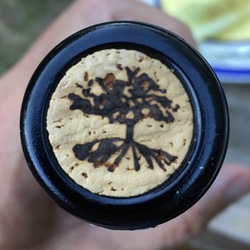


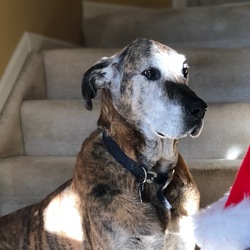


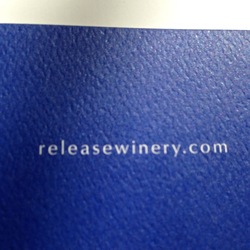






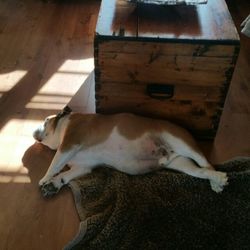



John Teets
Amazing value for the price! New Fortune restaurant — 7 years ago